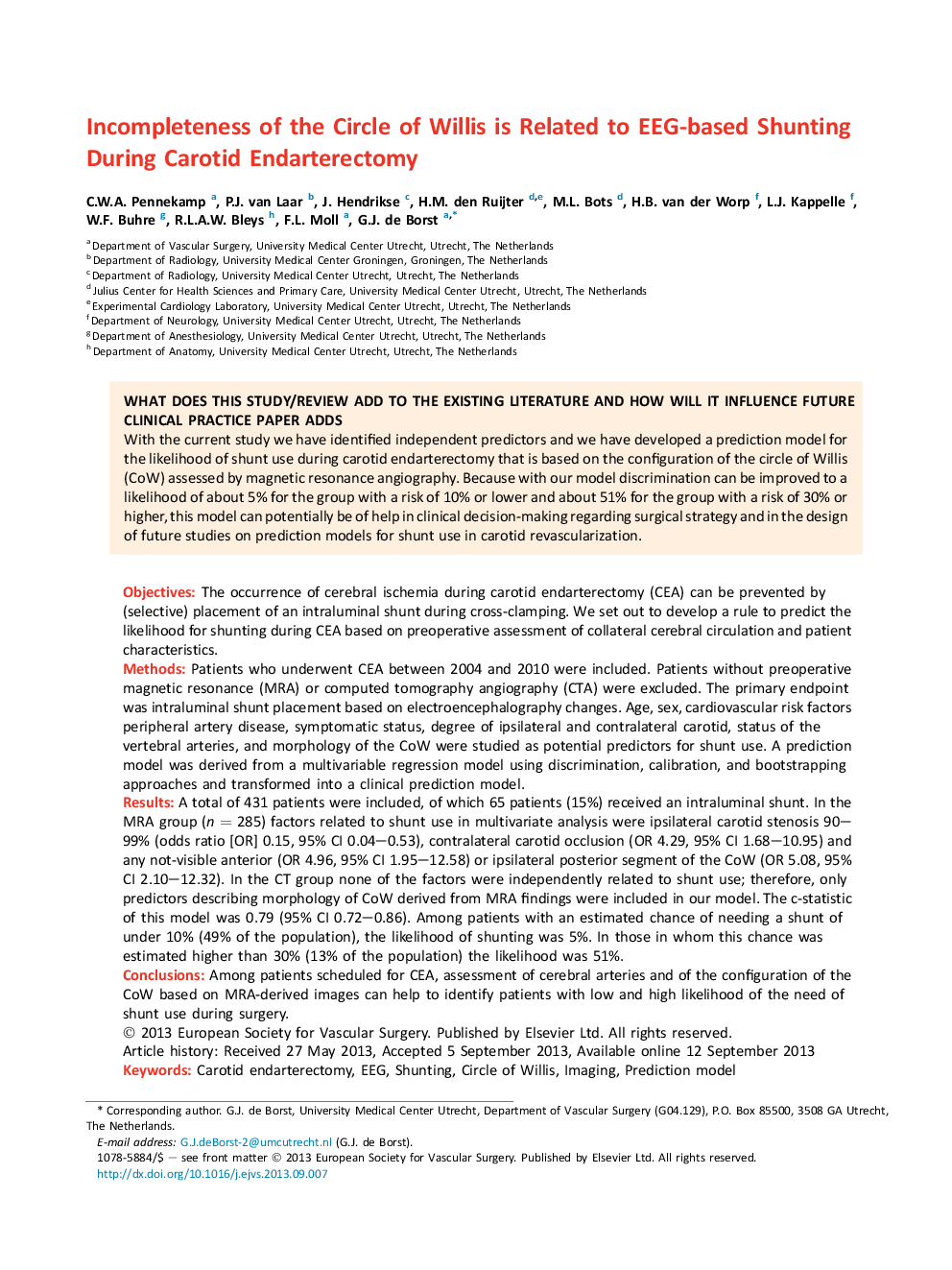| کد مقاله | کد نشریه | سال انتشار | مقاله انگلیسی | نسخه تمام متن |
|---|---|---|---|---|
| 2912481 | 1575459 | 2013 | 7 صفحه PDF | دانلود رایگان |

ObjectivesThe occurrence of cerebral ischemia during carotid endarterectomy (CEA) can be prevented by (selective) placement of an intraluminal shunt during cross-clamping. We set out to develop a rule to predict the likelihood for shunting during CEA based on preoperative assessment of collateral cerebral circulation and patient characteristics.MethodsPatients who underwent CEA between 2004 and 2010 were included. Patients without preoperative magnetic resonance (MRA) or computed tomography angiography (CTA) were excluded. The primary endpoint was intraluminal shunt placement based on electroencephalography changes. Age, sex, cardiovascular risk factors peripheral artery disease, symptomatic status, degree of ipsilateral and contralateral carotid, status of the vertebral arteries, and morphology of the CoW were studied as potential predictors for shunt use. A prediction model was derived from a multivariable regression model using discrimination, calibration, and bootstrapping approaches and transformed into a clinical prediction model.ResultsA total of 431 patients were included, of which 65 patients (15%) received an intraluminal shunt. In the MRA group (n = 285) factors related to shunt use in multivariate analysis were ipsilateral carotid stenosis 90–99% (odds ratio [OR] 0.15, 95% CI 0.04–0.53), contralateral carotid occlusion (OR 4.29, 95% CI 1.68–10.95) and any not-visible anterior (OR 4.96, 95% CI 1.95–12.58) or ipsilateral posterior segment of the CoW (OR 5.08, 95% CI 2.10–12.32). In the CT group none of the factors were independently related to shunt use; therefore, only predictors describing morphology of CoW derived from MRA findings were included in our model. The c-statistic of this model was 0.79 (95% CI 0.72–0.86). Among patients with an estimated chance of needing a shunt of under 10% (49% of the population), the likelihood of shunting was 5%. In those in whom this chance was estimated higher than 30% (13% of the population) the likelihood was 51%.ConclusionsAmong patients scheduled for CEA, assessment of cerebral arteries and of the configuration of the CoW based on MRA-derived images can help to identify patients with low and high likelihood of the need of shunt use during surgery.
Journal: European Journal of Vascular and Endovascular Surgery - Volume 46, Issue 6, December 2013, Pages 631–637